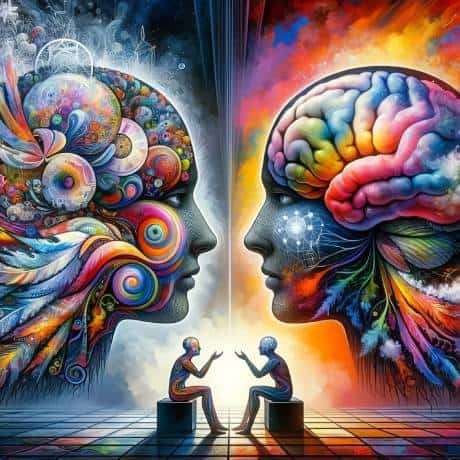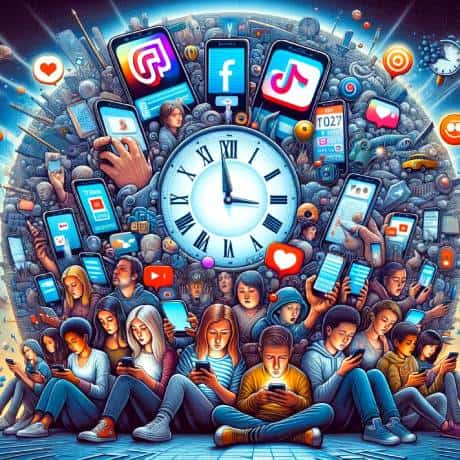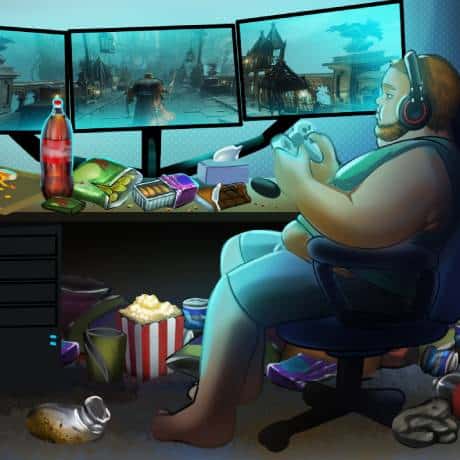Gaming, once relegated to bulky consoles and flickering screens, has undergone an evolutionary leap that carries us beyond the physical confines of our everyday world. The evolution of gaming from desktops towards a Matrix-style environment is a testament to technological innovation and creativity.
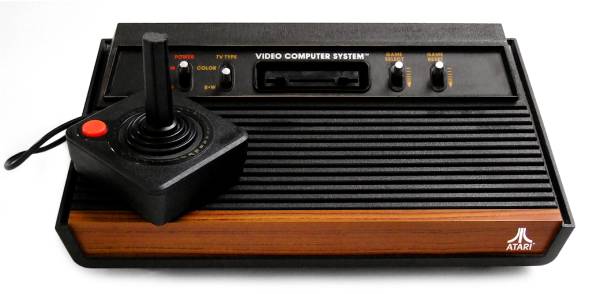 In the beginning, gaming was a relatively simple affair, with basic 8-bit graphics and limited player interaction. Desktop gaming offered a new frontier in the late ’70s and ’80s, with the advent of home computers. These desktop games came in many forms and genres, from the fantastical worlds of role-playing games to the fast-paced action of first-person shooters. As technology advanced, so did these games’ complexity and graphical capabilities, further immersing players in their digital realms.
In the beginning, gaming was a relatively simple affair, with basic 8-bit graphics and limited player interaction. Desktop gaming offered a new frontier in the late ’70s and ’80s, with the advent of home computers. These desktop games came in many forms and genres, from the fantastical worlds of role-playing games to the fast-paced action of first-person shooters. As technology advanced, so did these games’ complexity and graphical capabilities, further immersing players in their digital realms.
 The 1990s ushered in the era of online gaming. Suddenly, people from all over the world could connect and compete in a shared digital space. Multiplayer online games became social hubs, taking gaming to a more interactive level.
The 1990s ushered in the era of online gaming. Suddenly, people from all over the world could connect and compete in a shared digital space. Multiplayer online games became social hubs, taking gaming to a more interactive level.
One of the earliest successful online games was “Doom” in 1993, which pioneered the concept of online multiplayer. This first-person shooter game introduced the world to the thrill of competing against other real players in real-time, giving rise to the genre of online multiplayer games.
Following Doom, games like Ultima Online and EverQuest popularized the massively multiplayer online role-playing game (MMORPG) genre. These were immersive virtual worlds where players could explore, compete, cooperate, and socialize with thousands of other players.
As the new millennium dawned, the 21st century heralded an age of unparalleled advancements in the gaming industry. High-definition graphics, sophisticated motion-sensing technology, and the expansion of online gaming all converged to create a transformative shift in the gaming landscape.
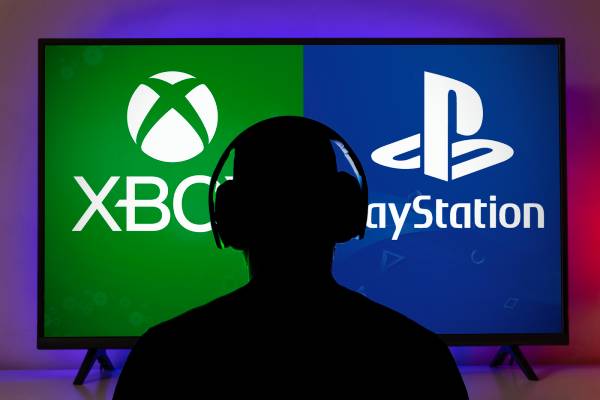 The early 2000s saw a surge in the development and application of high-definition graphics in gaming. The advent of powerful gaming consoles, such as the PlayStation 2, Xbox, and later the Xbox 360 and PlayStation 3, could support these visually impressive games. These new graphical capabilities turned video games from pixelated images into visually stunning and detailed digital works of art.
The early 2000s saw a surge in the development and application of high-definition graphics in gaming. The advent of powerful gaming consoles, such as the PlayStation 2, Xbox, and later the Xbox 360 and PlayStation 3, could support these visually impressive games. These new graphical capabilities turned video games from pixelated images into visually stunning and detailed digital works of art.
Motion-sensing technology also emerged as a groundbreaking innovation in this era. First, the launch of devices like Nintendo’s Wii and, later, Microsoft’s Kinect for the Xbox 360 introduced gamers to a new way of interacting with their games. Instead of pressing buttons, players could now use physical gestures, body movements, or even their voices to control their games, creating a more immersive and engaging gaming experience.
As games began to look and feel more like interactive movies, a convergence emerged between the gaming and film industries. Cinematic storytelling techniques, professional voice acting, and high-quality soundtracks began to find their place in video games. This cinematic approach to game design added depth to the storytelling, creating emotionally engaging narratives that rivaled those of movies and TV shows.
 But perhaps one of the most significant developments of the 21st century has been the rise of eSports. With online multiplayer games becoming increasingly popular and competitive, gaming has become a professional sport. Inspired by the structure of traditional sports, the first eSports tournaments took place, allowing skilled gamers to compete at a professional level.
But perhaps one of the most significant developments of the 21st century has been the rise of eSports. With online multiplayer games becoming increasingly popular and competitive, gaming has become a professional sport. Inspired by the structure of traditional sports, the first eSports tournaments took place, allowing skilled gamers to compete at a professional level.
Games like StarCraft, League of Legends, Dota 2, and Counter-Strike became the pillars of the eSports scene, drawing millions of viewers online and filling stadiums for live events. As a result, eSports has not only transformed the perception of gaming from a casual hobby to a legitimate competitive activity but also spawned new career paths in the industry, including professional players, coaches, analysts, and broadcasters.
Additionally, the advent of mobile gaming allowed people to take their games with them wherever they went.
 Yet, the gaming industry did not stop there. The introduction of Virtual Reality (VR) and Augmented Reality (AR) has further revolutionized the industry. These technologies enable players to be immersed in the game. As a result, games are no longer something we play – they are something we experience.
Yet, the gaming industry did not stop there. The introduction of Virtual Reality (VR) and Augmented Reality (AR) has further revolutionized the industry. These technologies enable players to be immersed in the game. As a result, games are no longer something we play – they are something we experience.
As we move towards a Matrix-style reality, the pioneering technologies in artificial intelligence, machine learning, and VR merge to create hyper-realistic virtual environments that interact with us in real time. Soon players will be able to touch, feel, and manipulate their surroundings just as they would in the physical world, blurring the lines between reality and the virtual world.
In this thrilling journey, we witness the incredible transformative power of technology. As we look to the future, we can only imagine where the next stages of this evolution will take us, especially when you consider Artificial Intelligence (AI) and the potential for game experiences to be catered to an individual. One thing’s for sure: the gaming world will continue to defy our expectations and redefine the boundaries of interactive entertainment.
Artificial Intelligence
It’s time to learn more about Artificial Intelligence today.










 Snacks
Snacks Water
Water Eye Sight
Eye Sight Hearing
Hearing
















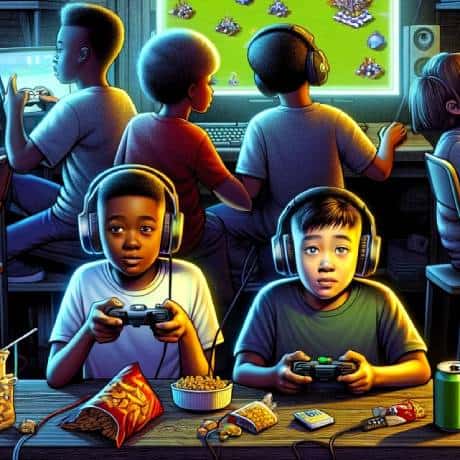





 In the beginning, gaming was a relatively simple affair, with basic 8-bit graphics and limited player interaction. Desktop gaming offered a new frontier in the late ’70s and ’80s, with the advent of home computers. These desktop games came in many forms and genres, from the fantastical worlds of role-playing games to the fast-paced action of first-person shooters. As technology advanced, so did these games’ complexity and graphical capabilities, further immersing players in their digital realms.
In the beginning, gaming was a relatively simple affair, with basic 8-bit graphics and limited player interaction. Desktop gaming offered a new frontier in the late ’70s and ’80s, with the advent of home computers. These desktop games came in many forms and genres, from the fantastical worlds of role-playing games to the fast-paced action of first-person shooters. As technology advanced, so did these games’ complexity and graphical capabilities, further immersing players in their digital realms. The 1990s ushered in the era of online gaming. Suddenly, people from all over the world could connect and compete in a shared digital space. Multiplayer online games became social hubs, taking gaming to a more interactive level.
The 1990s ushered in the era of online gaming. Suddenly, people from all over the world could connect and compete in a shared digital space. Multiplayer online games became social hubs, taking gaming to a more interactive level. The early 2000s saw a surge in the development and application of high-definition graphics in gaming. The advent of powerful gaming consoles, such as the PlayStation 2, Xbox, and later the Xbox 360 and PlayStation 3, could support these visually impressive games. These new graphical capabilities turned video games from pixelated images into visually stunning and detailed digital works of art.
The early 2000s saw a surge in the development and application of high-definition graphics in gaming. The advent of powerful gaming consoles, such as the PlayStation 2, Xbox, and later the Xbox 360 and PlayStation 3, could support these visually impressive games. These new graphical capabilities turned video games from pixelated images into visually stunning and detailed digital works of art. But perhaps one of the most significant developments of the 21st century has been the rise of eSports. With online multiplayer games becoming increasingly popular and competitive, gaming has become a professional sport. Inspired by the structure of traditional sports, the first eSports tournaments took place, allowing skilled gamers to compete at a professional level.
But perhaps one of the most significant developments of the 21st century has been the rise of eSports. With online multiplayer games becoming increasingly popular and competitive, gaming has become a professional sport. Inspired by the structure of traditional sports, the first eSports tournaments took place, allowing skilled gamers to compete at a professional level. Yet, the gaming industry did not stop there. The introduction of Virtual Reality (VR) and Augmented Reality (AR) has further revolutionized the industry. These technologies enable players to be immersed in the game. As a result, games are no longer something we play – they are something we experience.
Yet, the gaming industry did not stop there. The introduction of Virtual Reality (VR) and Augmented Reality (AR) has further revolutionized the industry. These technologies enable players to be immersed in the game. As a result, games are no longer something we play – they are something we experience.
